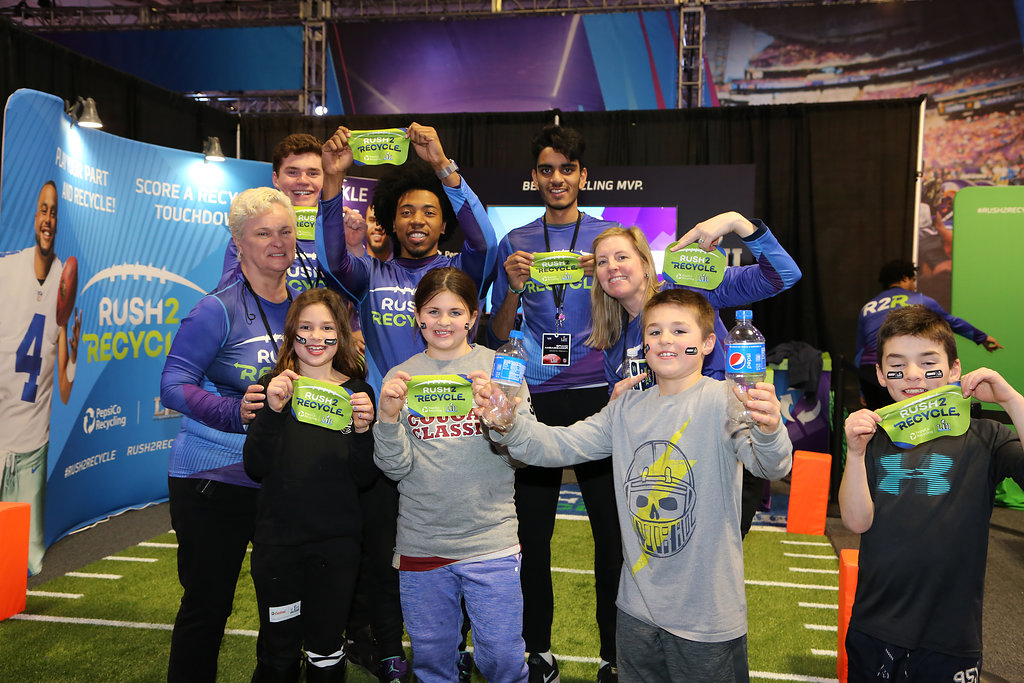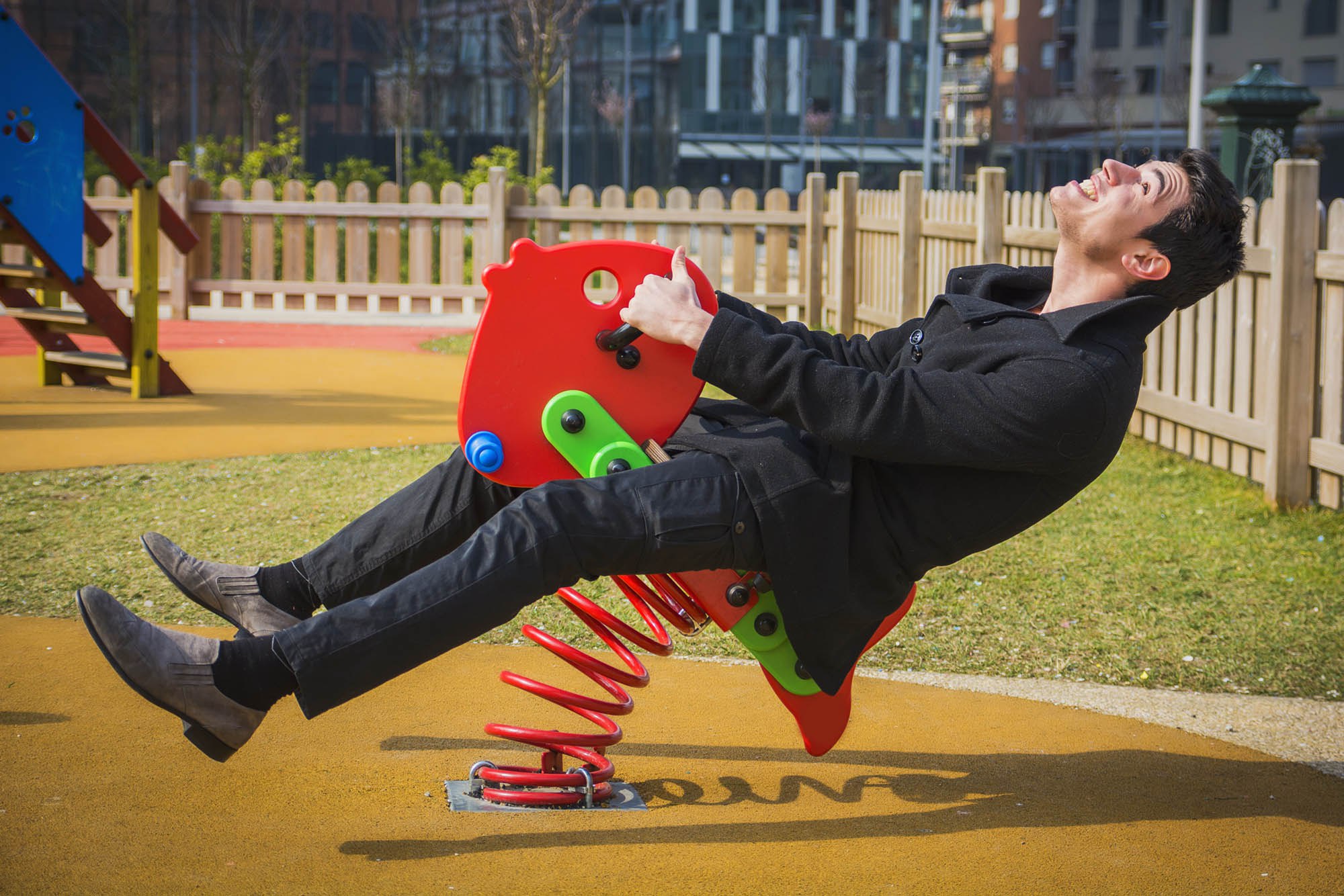Once upon a time, a group of brave young scientists decided to compare the attention spans of humans and goldfish. In 2000, humans had a several-second advantage over the goldfish regarding attention, but since 2010, the goldfish has surpassed humankind. In the digital age, the average human’s attention span is only 8 seconds, while a goldfish can concentrate on something for a whopping 9.
What does this mean for businesses in the digital age?
As a brand, it’s become even harder to compete for your target customer’s attention. Although, there are several proven metrics for gauging how well your audience is paying attention to your brand and your content.
How can you measure audience attention?
You can accurately measure audience attention by considering how often your content is liked, loved, shared, or commented on.
People assess a brands credibility and gauge its trustworthiness within 50 milliseconds of first viewing a website or landing page. If you want to know whether your audience is paying attention to your content and finds it credible or trustworthy, you need to pay attention to how often they interact with it, and what type of interaction is taking place.
A comment or share is a much more robust indication of trust, credibility, and attention than only a ‘like’ or a ‘love.’ A ‘like’ or a ‘love’ doesn’t entail much investment on the consumer’s end, although a ‘like’ or a ‘love’ will still shed a favorable light upon you. People want to associate with that which is popular, and likes and loves do indicate popularity.
But with a comment, they viewer is making a time investment in your content by responding to it and possibly hoping for a response back. A ‘share’ indicates an investment of their own credibility by associating with your content.
So, how can you get people to pay more attention to your brand?
The first thing you need to consider is your content. Is it engaging, well-written, valuable, and informative? Research says that if your content is riddled with poor grammar and spelling mistakes, you’re actively sabotaging your brand’s credibility. Also, if your content is uninspiring, people may not necessarily find you untrustworthy, but they won’t pay any attention to it. Give your viewers interactive, informative content while still being fun and they’ll more likely pay attention to what you have to say. Furthermore, you want to add a call-to-action to your content.
This way, you’re inviting the reader to respond by either liking, sharing, or commenting. Better yet, specifically ask for a comment or share since it adds more weight and credibility to what you’re saying, not to mention on social media, the algorithms will look upon you more favorably with the more interaction your brand receives.
In this way, attention is an economy. The more people you get to interact with your brand, the more the algorithm will show your content to more consumers. Attention compounds upon itself. If you want to gain consumer trust and build your brand’s credibility, don’t ignore the attention economy.
Have a listen to this latest TED Podcast: Attention Please. It should offer some additional insights.
Thanks again for paying attention 
I recently listened to the TED podcast about how we get wiser with age. It touched on many different people and what experiences attributed to this claim. What I uncovered was that age doesn’t necessarily make you wiser, and being “childish” is a good thing.
In an interview with child prodigy, Adora Svitak, she talks about how the world needs more “childish” thinking. And that the word itself shouldn’t carry the negative connotation it does among grown-ups. It should be redefined so that acting “childish” means to enable us to dream up big ideas, be wild and creative, optimistic, fun and free.
She goes on to call-out that in fact if the world would adapt to being more “childish”, that we might not be living in such tough times. We might not be living in an era where negativity, fraud and distrust are becoming the new normal. And that grown-ups need to be more willing to learn from children as much as to teach them.
I for one, couldn’t agree more. I’ve always thought that taking yourself too seriously dilutes the essence of life and most certainly creativity. That if you obey all the rules, you miss all the fun. With this shift in behavior, people, companies, brands and cultures can shape a better world. A world where we’re inspiring our peers more than ever, rather than frightening or appalling them. One where big dreams deserve high expectations. And where fundamental honesty becomes the core attribute in what we are marketing or selling.
Now, there’s no way this will happen overnight, but if we all were to start acting a bit more “childish”, and let our imaginations run free, then maybe, just maybe, we could get there soon.
Here are some quotes we live by at Canopy that reflect the heart of this post, and the spirit behind what Adora preaches. We use them in our signatures so that we never forget to behave this way, and our colleagues don’t either:
- “Creativity is contagious, pass it on.”
- “Creativity is a wild mind and a disciplined eye.”
- “If you obey all the rules, you miss all the fun.”
Now go on, do something childish!
TTYL!
]]>
Studies indicate that 66% of consumers, regardless of age, will purchase from a brand they feel is sustainable and trustworthy. The numbers are even higher once the Millennial cohort is isolated; at 73%. When companies and brands tailor their advertising with trustworthy information for their target customer, conversion rates are boosted 30%.
Demographics Are Everything
Baby Boomers, the generation born between 1946 and 1960, were once considered the largest generation to ever live. This generation, for decades, has been the foremost influence driving business’s marketing efforts and product lines. But, all that’s about to change.
In the next few decades, the largest transfer of wealth, over 30 trillion dollars, will take place—from Boomers to the Millennial generation and their little brothers and sisters; Generation Z. Demographics are everything, and the aging of the Boomers and the rise of Millennials and Gen Z is going to severely change the marketing and business landscape.
Millennials and their younger counterparts look at companies, brands, and businesses through an entirely different lens than Baby Boomers, and brands are starting to feel the pinch of their critical gaze.
The Millennial generation is far more risk-averse than their Boomer elders. Millennials are more likely to value experiences over things, and will spend their money accordingly. They are not investing in real estate, and are far less likely to buy a car new and on loan, or even own a car at all. Furthermore, this generation is more skeptical of brands than their predecessors.
Trust Is Visceral
While trust has always been an important metric and component driving customer buying decisions, with Millennials, trust is now a key component, not a peripheral, nebulous concept. For them, trust is visceral, and necessary. Despite their young age, this generation and the one behind it are jaded toward the business and advertising worlds.
It’s hardly surprising. While Boomers came of age during the post-war boom, when housing prices, relative to income, were still affordable across socio-economic status, for Millennials this is not the case. Furthermore, this generation witnessed and experienced the massive fallout of the housing crisis of 2008. Since then, this generation’s trust in institutions and brands and businesses was severely crippled and eroded. To earn Millennials coveted trust in the business world, brands are required to operate in a trustworthy, and sustainable fashion. And, brands who are perceived as civically responsible will be more likely to obtain those depreciating Millennial dollars in the coming years.
So, how can a brand appear trustworthy to younger consumers?
- History: By sharing the company history or brand’s personal story, offering social proof
- Accountability, i.e.: ‘money-back guarantees’ or offering free trials
- Affiliations: Proving authority through affiliation with other trustworthy brands in the sphere
- Relatability: Approaching from a sympathetic angle by understanding the customer’s pain points. Telling stories in an informal, casual tone
- Subtlety: Offer value first without requiring anything in return
Businesses will have to compete in this new generational ethos. Boomers will not be the largest holders of disposable income soon, and in order to stay competitive in the new market, brands that build trust with their customers will reign supreme.
]]> Imagine a tool so powerful that it could yield results faster than any other traditional marketing tactic. Not only would you be able to cut through the clutter and reach out to your audience, but also engage and get a reaction from them.
Imagine a tool so powerful that it could yield results faster than any other traditional marketing tactic. Not only would you be able to cut through the clutter and reach out to your audience, but also engage and get a reaction from them.
Enter the world of experiential marketing.
In today’s overly connected world, the amount of messaging we receive on every digital channel is staggering. Studies show that consumers see about 4,000 ads every day. On top of that, brands also have to compete with their audience’s social networks, friends, emails, text messages, and so on. With this amount of noise, there’s no wonder that consumers have raised the bar and become selective about the content they engage with.
Creating a Bond with Your Audience
Digital marketing has made it easier for brands to reach out to and engage a wide audience. However, most of the messages received through these channels don’t stick in the consumer’s mind. Just think about it: you can probably remember the content of a billboard you saw a few days ago on your way to work, but you can’t tell what the ad on the website you visited ten minutes ago was about.
Although we live most of our lives in the digital world, we still crave real connections. That’s why we go to concerts, attend events or watch sports competitions. The emotion and excitement of these experiences make us feel closer to our peers and, by extension, to the brands that happen to initiate them. Even when it comes to simple things, such as watching a horror movie, studies show that consumers feel a great attachment to the brands nearest to them when they’re scared or along (interesting, huh?).
The beauty of experiential marketing is that it allows you to spark powerful emotions and build a lasting connection with your audience that could transform into brand loyalty. And, it makes sense if you think about it: prospects are more likely to engage with your brand and mention it to their friends and family if you provide a unique and immersive experience than if you were to reach out to them with a standard online ad or sponsored post. We’re not talking about PR stunts here, but experiences that engage your audience and make them excited to share it with their network. Think about IKEA’s slumber party, Refinery29’s 29Rooms events or Red Bull’s jump from space.
Blending Digital & Experiential
You don’t have to burn a hole through your marketing budget to offer engaging brand experiences. Today’s technology has made it easier for brands to augment their digital marketing efforts and increase brand loyalty. With a VR headset, for example, you can enable prospects to see how it would be if they would use your products or services. If you’re a travel agency, you could use virtual reality technology to show prospects how the hotel room would look like or what they can expect to see when they reach their destination. These experiences engage all five senses, empower the consumer, and make them more excited about your offer than traditional tactics.
In Conclusion
You could have advanced tools that measure every possible metric, from impressions to click-through rates – and, that’s all good and necessary. But, the smile you manage to put on a prospect’s face is priceless. And, that’s where experiential marketing can make the difference and help you build a powerful bond.
]]>As part of PepsiCo’s Zero Waste initiative, we were brought in to drive the message home at this year’s Super Bowl in Minneapolis. Along with the PepsiCo Recycling team, we created Rush2Recycle, a high-energy activation featuring several immersive experiences, allowing fans to drop themselves into fun football action to see how many bottles they can recycle throughout Super Bowl Week. See all the action below in our Rush2Recycle highlight video.
Running parallel to the physical activation, we launched a website to drive awareness, while capturing the excitement through social media. Rush2Recycle.com will serve as an ongoing tool to further the movement through online engagement.

This innovative project aimed to set a new standard for waste diversion at one of the nation’s premier events and inspire action across the country. The long-term goal is to recover more than 90% – more than 40 tons – of stadium waste by recycling bottles and cans, composting organic materials like food waste and service ware, and repurposing items through local community organizations.
For more information on this activation, visit Rush2Recycle.com or shoot us a note at info@canopybrandgroup.com.
]]> There is no room for failure – it’s an idea that gets thrown around a lot in marketing meetings. And it makes sense to think that way, right? Since so much planning goes into even the smallest detail of a campaign, it’s only natural to want to maximize your success. But, in their attempt to make everything go perfect, marketers and brands alike have become afraid of taking risks.
There is no room for failure – it’s an idea that gets thrown around a lot in marketing meetings. And it makes sense to think that way, right? Since so much planning goes into even the smallest detail of a campaign, it’s only natural to want to maximize your success. But, in their attempt to make everything go perfect, marketers and brands alike have become afraid of taking risks.
As a result, most marketing campaigns seem like they’ve been copied and pasted from the same guidebook. There’s little deviation from the common approach marketers use to promote a brand. Sure, there’s nothing wrong with focusing on crafting great content, using social media strategically, and getting people to talk about you. But where’s the creativity?
Finding Comfort in Failing
It’s not just advisable for marketers and brands to take risks; it’s almost imperative they do so. When everyone is singing the same tune, it can be rather difficult for consumers to identify an individual voice. That’s not an ideal scenario.
Industries like digital marketing, advertising, or product innovation are growing fast, and the rules keep changing. Your job isn’t just to follow the guidelines, but also anticipate what will happen next and stay ahead of the game.
Being groundbreaking is almost impossible when the fear of taking risks doesn’t allow you to move forward. Here’s the thing: failing isn’t a show stopper, but an opportunity to learn. It’s impossible to assess whether something will work or not unless it’s put to the test.
Marketers and advertising agencies have a lot of resources at their disposal to test the water before going public with new and ingenious campaigns, but often they don’t. And, that’s a shame considering that it can help you figure out what consumers want, especially now when they have learned how to tune out aggressive marketing messages and are looking for genuine communication with brands.
Failing Is Not the End
When the Gap changed its logo back in 2010, it wasn’t just that people didn’t like it – it sprung outrage. The logo itself wasn’t the catalyst for public discontent (though people had a blast criticizing it on social media), but how they handled it. The company asked people to send in their logo suggestions, which in turn sparked a lot of criticism, with some even saying the entire thing was just a marketing scheme to get a rebrand for free.
As you might already know, the Gap is still going strong. The failure didn’t push the brand into oblivion, but it made it more aware of one simple fact: if your audience feels you’re dishonest, they will reprimand you for it. The same things happened with the Tropicana repackaging or Pepsi rebranding. All three brands were suddenly confronted with the clear possibility of failure, and yet all three managed to overcome these stepping stones and continue to thrive.
If there’s any take away from this text, it’s this: failure isn’t as deadly as you’d think, as long as you learn your lessons from it.
]]>

How to Make It Go “Viral”
Search for “how to go viral” on Google, and you will get over 15 million results and a seemingly endless list of blog posts, articles, or studies presenting with great precision the steps you need to take to reach a massive audience. It seems that everyone and their mother wants to learn how to create viral content.
Marketers know this scenario all too well: a client, at one point, will express their desire to make their brand viral. Even those who don’t bother with the intricacies of marketing know that once you have a piece of content disseminated on a large scale by people, you’ve made it big. But is viral content something that you can control or, better yet, craft at wish?
How to Make Something Viral
At least, in theory, marketing agencies know how to make a video, post, ad, or any form of content go viral. It’s not exactly a secret recipe – a short analysis of previous viral materials can result in a lot of useful information on how to make a particular brand famous.
So, how do they do it?
Well, they’ll most likely carve out a strategy that will contain everything from what words to use in the headline, what Social Media platform to use, and when to publish the content or launch the campaign to get the biggest impact. They’ll look at popular trends online and try to integrate them without making it look forced.
While all these tactics can certainly boost up the visibility of your campaign, there’s no guarantee it will take the internet by storm. Celebrities or big brands that already have a generous following have a better chance of creating content that will spread like wildfire. Those with a modest follower count, however, have to rely on luck.
Here’s the thing: there are an average 6000 tweets posted per second, totaling up to roughly 500 million tweets per day. And, don’t let us get started on other social media platforms. The amount of content posted every day is insane. One truth that you must accept is that the internet is unpredictable.
So, Should You Try It?
There’s nothing wrong with contacting a marketing agency and hiring them to plan a campaign for your brand, obviously. But going into the meeting with the sole intent of becoming viral can bring to light some disappointing outcomes.
Marketers know the odds of a smaller brand going viral. It’s not great – let us tell you just that. Unless you’re Beyonce or Pepsi, you can’t make something go viral.
What You Can Do
Instead of focusing on quick ways to get viral, talk to an agency or marketers about a campaign that can generate some buzz around your brand the old-fashioned way: by going directly to the people interested in what you’re offering.
Sure, you won’t be taking over the internet, but you can still gain some visibility and status. So, try to think long-term and focus on tactics that although don’t bring impressive results quickly can help scale your business.
]]>
Marketing companies have been competing for the minds of millennials fiercely over the last few years – and for good reason.
Millennials represent about a quarter of the entire US population, and have over $200 billion in annual buying power. Though they have less discretionary income than Baby Boomers and older generations, they have a lot of influence – and are hard to reach with traditional marketing methods.
But are millennials still the hottest consumers out there? Or should we be focusing our efforts on a new generation of consumers? Here’s the scoop.
Millennials Are Still The Most Important Consumer Generation – For Now
Millennials are defined as individuals who were between 18-34 in 2015 by the Pew Research Center. They are just now entering the prime of their lives as consumers.
As millennials age, their income continues to grow as a generation. Most millennials are now out of college and working in professional careers, and millennials are the most educated generation to date.
This means that the buying power of millennials is only going to grow in future years, as they begin to start families and earn more discretionary income.
However, millennials will not stay at the top of the heap forever. As time goes on, Generation Z continues to grow – and a new generation of consumer is born.
Gen Z – The Largest Consumer Generation In History
Generation Z is defined as the “post-millennial” generation. While most definitions vary, it’s agreed that most Gen Z individuals were born around the year 2000 or later. This generation already makes up 25% of the population, and is forecasted to continue to grow.
As Gen Z becomes older, and younger people begin to enter the consumer market, they are likely to become the most highly sought-after consumer generation, just as millennials were before them.
Focus On Millennials In Marketing Efforts – But Don’t Forget About Gen Z!
How should brands market their products? Luckily, millennials and Gen Z both share a few common attributes. Consumers from both generations are tech-savvy and have quite a bit of influence on the market – and both Gen Z and millennial consumers do not respond well to traditional advertising methods.
While millennials should be the focus on most marketing efforts, Gen Z should not be overlooked. Brands should be using social media platforms like Snapchat, Instagram and Twitter to reach a younger audience, and should always be on the lookout for hot trends that could appeal to Gen Z consumers.
Conclusion
As time goes on, millennials will become less important as a consumer audience, and the importance of Gen Z will grow. So focus on millennials for now, but don’t forget about the younger generation.
]]>
We live in a tech-infused world – that is a fact. However, many small business owners refuse to change their old ways and continue to employ outdated marketing tactics. That can only be a recipe for failure or, at best, stagnation.
Here’s the thing: if you want to survive in today’s business environment and grow a successful brand, then you must go digital. But, because technology and society evolve faster than your organization may adapt, you shouldn’t get hooked on fads and trends. Instead, focus on developing an online marketing strategy that will serve you in the long run.
The question you may be asking yourself now is how you can prepare your business for the digital world?
Here are ten possible solutions.
- Consult with Digital Experts: The hard truth is that you will not be able to turn your business digital by yourself. Even if you spend a lot of time reading and doing research on the best digital marketing practices, it may still be hard to understand how this world functions. Don’t hesitate to ask for the help of experts and hire an agency to help you create your online marketing strategy.
- Use Freelancers: The days when you needed an office and employees available in a set location are long gone. Now, with the help of the internet, you can secure talent from all corners of the world. A lot of young professionals prefer mobility and flexible hours rather than high compensation or status.
- Pick the Best and Most Effective Digital Channels for Your Business: If you’ve got a retail brand, considering social media may just be the best way to double your conversions. However, the channels that may work for a brand may prove to be ineffective for you. Explore your customer preferences and test more than one digital channel to see what makes them tick.
- Be Ready to Turn Your Brand into a Story: You should consider turning your business strategy into a narrative that resonates with your audience. Digital storytelling is a growing trend among organizations and for good reasons. The ones that tell the best stories are the ones with the most devoted customers.
- Center Your Brand’s Story around Solutions, rather Than Products: Hear this– a writer can never create a good story around mere objects, and a company can’t build a business strategy solely around their products. Of course, your customers need your products, but they need them because they help them overcome certain problems. Try focusing your narrative on your customers’ pain points and the best solution rather than your products.
- Be Customer-Centric: People are tired of aggressive communication and are becoming very cautious about the brands they choose. Make sure to invest in user experience, both online and offline and show your customers that you care about more than just their wallets.
- Adapt: Sure, turning digital is mostly about technology, but it is also about people. Keep your team educated about the importance of change and help them greet innovation with enthusiasm.
- Track Your Progress: Use analytics to discover where your audience is coming from so that you can intensify interactions in those areas.
- Leverage Social Media Platforms: Facebook, Twitter and most notably, LinkedIn all offer marvelous opportunities to grow online. Be sure to plan your social media strategies well-ahead, and always deliver quality content.
- Be Social: So you’ve started your social media campaigns, and everything is looking pretty well. Sustain this by engaging with your prospects and building meaningful relationships with them.
Conclusion
The digital era is at its dawn; there’s a whole lot more to unfold, so be prepared. When taking the digital road, you will encounter a variety of risks. But the benefits are well worth it.
]]>
Today’s marketing revolves around the idea that the customer is in charge of the brand, not the other way around. As such, the user experience is the primary focus in today’s business world, and companies are spending a lot of time and resources trying to figure out why people pick one brand or product over another.
Sure, prospects may choose a product out of curiosity first, but they won’t repeat the purchase if the solution doesn’t deliver on its promises. More often than not, customer satisfaction largely depends on how well your brand delivers experiences.
The idea is rather simple: if you want to win over your audience and turn them into loyal customers, then you need to do more than just advertise to them. You also need to ensure that they’re having the best possible experience when using or interacting with your brand.
That’s where experiential marketing can come in handy
Message Broadcasting Is Slowly Turning Obsolete
Every brand has a message, but that’s not enough for the 21st century consumer. Sick of the same old “buy from the best there is” advertising tune, customers will slowly turn their eyes to wherever some new, fascinating experiences may arise.
That’s because experiential marketing is all about engaging all five senses and not merely sending a message. Consumers care more about having their senses caressed than they care about what you are trying to tell them. They’ll surely understand your message better if you give them an actual taste of it.
Focus your brand strategy on how and what your prospects feel. Align your business with your audience’s expectations if you want to deliver great experiences.
The Benefits of Experiential Marketing
Young consumers view experiences as more valuable than things. As such, they are more likely to buy products from someone who engages with them directly rather than a business that uses advertising to communicate. Experiential marketing is all about creating peer-to-peer interaction and engaging audiences in ways that will make your brand stay top of mind.
That’s not to say that you should ignore conventional tactics, such as social media, content marketing or email marketing. These are still beneficial and will bring impressive results to your business. However, make sure to mix these strategies with experiential marketing tactics and create interactions that will enable your audience to connect to and absorb your brand’s values.
For example, you could organize events where people can taste, hear or feel your products and get a close look at what your brand is about.
Another excellent and simple way of putting experiential marketing to work is by giving away product samples. Just think about it: what protein bar are people more likely to buy – the one they see advertised on TV all the time or the one that organizes funky events at their local gym?
It’s not that hard to guess the correct answer.
Keep in mind, though that this type of marketing is not just about food samples and parties. Due to recent developments in technology, you may also lure your prospects into your brand’s narrative through virtual reality. If you own the right infrastructure, you can have worldwide expositions of products or services and grow your customer base in ways that couldn’t have been possible otherwise.
Conclusion
Whatever the case, sharing positive experiences with your prospects builds trust and deep relationships that can ultimately translate into loyalty. Nowadays, your value relies on what your audience feels about your brand. Make sure they get it right.
]]>


